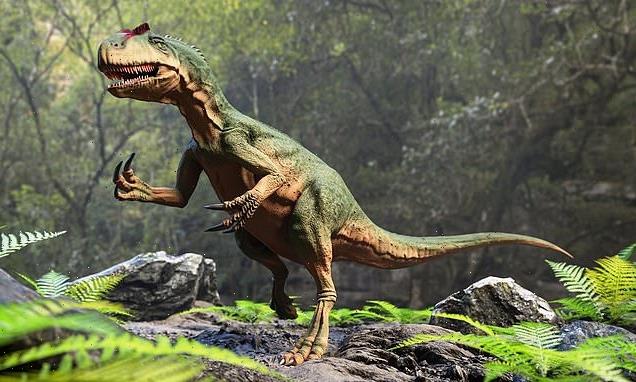Massachusetts: Great white shark feeds off of whale carcass
We use your sign-up to provide content in ways you’ve consented to and to improve our understanding of you. This may include adverts from us and 3rd parties based on our understanding. You can unsubscribe at any time. More info
The frenzied great whites were spotted devouring the dead whale during an expedition to study basking sharks. The researchers were alerted to the presence of a whale carcass in the Stellwagen Bank National Marine Sanctuary, knowing the local shark populations would not pass on this tasty morsel. In a video clip shared by the National Oceanic and Atmospheric Administration (NOAA), the researchers managed to capture some of the deep-sea predators feasting on the corpse.
The NOAA biologists posted on Facebook: “You will never guess what fin-tastic sight scientists in Stellwagen Bank National Marine Sanctuary stumbled upon this week!”
Over a two day period, the researchers observed at least eight sharks rising from the deep for an easy bite.
The feast presented the perfect opportunity for the researchers to tag five of the great whites that surfaced.
According to David Wiley, a research ecologist at Stellwagen Bank, it was an “unimaginable” sight to behold.


He told Live Science: “It was nature in action. Everything dies for something else to consume.”
Great whites are among the most dangerous and biggest predators to roam the seas.
With 300 razor-sharp teeth lining their powerful jaws, the sharks rip into their hapless victims without a need for chewing.
As seen in the NOAA video, the sharks mercilessly tear out entire bits of blubber before swallowing the pieces whole.
Great whites are known to feed on a wide array of animals, from small fish to seals and dolphins.
Tampa Bay: Great white shark bites boat after circling group

It in this particular case, however, the sharks have demonstrated themselves to be capable scavengers as well.
According to the International Shark Attack File (ISAF) at Florida Museum, the great white or Carcharodon carcharias, grow up to lengths of 20ft (six metres) though there have been unconfirmed reports of even bigger beasts.
On average, they weigh between 4,000 and 7,000 pounds.
The great white has been credited with more unprovoked attacks on humans than any other species, making it one of the most dangerous and fatal to encounter.


Most great whites spend their days hunting for prey deep below the surface.
But as the NOAA video demonstrates, they will occasionally swim to the surface for a meal – but only on very rare occasions.
The ISAF said: “Some evidence suggests that white sharks decide a prey’s palatability while it is lodged in the shark’s mouth.
“Researchers also believe that white sharks may prefer animals rich in energy, such as marine mammals, in favour of less fatty, energy-poor prey.
“This is supported by some observations of aggregations of white sharks selectively feeding on the blubber but not the muscle layers of mysticete whales.”
According to the World Wide Fund for Nature (WWF) great whites are presently listed as a “vulnerable species”.
Great white populations are on the decline as a result of hunting, in particular, for their fins and teeth.
Sharks also tend to be caught up in commercial fisheries and get entangled in nets that trap them.
Great whites are found in virtually all of the world’s oceans, though they tend to prepare temperate seas.
Source: Read Full Article


